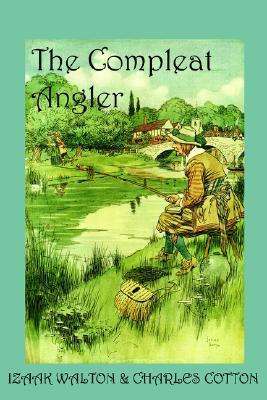Chapter XV — The Compleat Angler
byChapter XV – The Compleat Angler opens with a focus on simpler quarry, perfect for novice anglers who seek enjoyment without elaborate skills. Piscator begins by describing the gudgeon, a modest fish praised not just for its flavor but also its healthful qualities. Its silver skin and spotted sides make it easy to recognize, and it favors swift, shallow streams where the current keeps the gravel clean. These fish do not chase flies like trout but feed from the bottom, nibbling on red worms that drift with the current. Fishing for them is straightforward—drop your line low, let the bait rest close to the riverbed, and wait. Their mouths, being tough-skinned and durable, ensure that once hooked, a gudgeon is rarely lost.
Gudgeons prefer the warmth of summer shallows but retreat to deeper pools as temperatures drop and weeds begin to rot. In colder months, patience becomes key, as they gather in quiet corners, more sluggish but still catchable. Using a float can help, but those who enjoy trout fishing may appreciate the thrill of striking directly without one. Piscator describes how some anglers use a light rod with a fine line, letting it drift naturally across the streambed to mimic natural feeding patterns. These simple methods teach attentiveness, something even seasoned anglers forget. The gudgeon’s behavior mirrors seasonal rhythms, offering a living calendar of stream life for those who study its patterns closely.
Moving to the ruffe, or pope as it’s sometimes called, Piscator describes a smaller cousin to the perch, sharp-spined and tenacious. Despite its prickly form, it’s valued for flavor, often preferred over fish of greater size. Its meat, white and firm, cooks well and carries no earthy taste, a benefit of its diet and preferred habitats. Ruffes thrive in slow, deep water, where weeds are dense and movement is minimal. Once located, these fish strike fast and bite greedily, making them ideal for learners wanting quick feedback. Their numbers can be large, so a well-chosen spot may keep a basket full for hours, rewarding the patient hand.
Catching ruffe requires bait small enough to fit its mouth, often a fine worm or tiny grub presented just above the mud. The use of a float can be helpful in detecting their sharp, sudden bites. These fish rarely fight for long, but their eagerness makes up for the lack of struggle. Piscator advises anglers to check the line often, for even a short absence may let a small fish nibble the bait clean. Such interactions teach timing and control, skills easily transferred to more demanding species later on. For many anglers, the joy isn’t in the fight but in the observation, the quiet tracking of life below water’s surface.
The bleak enters the conversation as a final addition, a fish known for its shining scales and light-catching motion. It swims near the surface, often in schools, chasing insects and fine debris. Bleak fishing is best done with minimal equipment—just a fine rod, a light line, and small hooks. The bait, often a speck of worm or a crushed fly, needs to flicker and float naturally. Patience is less required here; action can be quick and rewarding. These fish, though small, give learners constant practice in precision casting and delicate reeling.
Bleak are often overlooked by those seeking trophy fish, but Piscator finds charm in their liveliness and ease. They teach rhythm, repetition, and awareness—key traits for any angler. Their silvery bodies, flashing like coins in the sun, make each catch feel like a tiny prize. For young or new anglers, bleak offer both fun and foundational skill, encouraging continued practice and deeper understanding of the water’s surface world.
Through all these fish—the gudgeon, the ruffe, the bleak—Piscator crafts a lesson deeper than bait and hook. He shows that even modest catches can delight the senses and reward the spirit. Fishing, in this form, becomes less about conquest and more about communion. It is not the size of the fish but the richness of the experience that matters. The chapter ends with a quiet reassurance: joy in angling does not come only from mastery, but from attention, presence, and respect for even the smallest life that stirs beneath the current.


